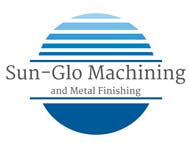It is by now common knowledge in any industry that relies upon high-quality, dependable, and cost-effective construction materials that trade tariffs on aluminum and steel are going to impact your company’s bottom line. Everyone is trying to protect that bottom line. Some companies may do so by cutting costs and corners, and by cutting customers off from heretofore high-quality products. Others will crunch the numbers and hire an accountant that will advise firing employees; no one wins. However, if that accountant has any background in economics, they will tell you that the best way to protect your bottom line is by protecting the interests of both customers and employees: if the interests of the former come first, those of the latter will follow. And since protecting customers means looking after your product, you have to make sure that the money you have invested in steel and aluminum materials is put to use. Simply put, treat your metal well—and do it by treating your metal. One of the easiest and most economical ways of doing this is through chromate conversion coating, applied by a chromate conversion coating expert.
Toting the Coating: what is chromate conversion?
The concept of expert is important here: a chromate conversion coating expert will know the chemistry, physics, and ecology (important for tax-breaks) of the process, which although entirely common, is rather complicated. As a quick parenthesis, a chromate conversion coating expert is not the same person who throws chrome onto your car or motorcycle; in fact, chromate is not the same as chrome at all, and instead of a mirrored, quicksilver finish, products coated in chromate have an almost nacreous, green-yellow appearance that is altogether more practical than chrome. The process is so named because of the chromate found in the chromic acid of the chemical bath in which parts are treated. In recent decades, it’s been found that this process produces toxic by-products. Thankfully, there are more eco-friendly and innocuous options available that don’t involve the use of the toxic hexavalent chromium. Therefore, be sure to ask your metal plating expert about such an option.
What’s the use?
A chromate coating is common in measure with its utility: from high-grade aero-space parts, to electronic housings and component parts, chromate-coated aluminum, zinc, or cadmium is simply tougher than its untreated counterparts. A chromate conversion coating expert will tell you that the process, in jargon, pacifies the metal. This means that the metal becomes less reactive to native reagents—such as the oxygen in the air or sodium in water—and therefore won’t rust. Furthermore, a chromate coat lends the ideal base surface to accept adherent agents, as well as paint. Chromate, unlike some other treatments, offers chemical adhesion versus mechanical adhesion—which merely means that the surface area of the chromate layer is not significantly greater than the untreated metal—therefore friction between it and other surfaces is kept to a minimum. Similarly, the overall volumetric increase of the coated item increases only barely, from 0.1 x 10-5 to 0.4 x 10-5 inches.
Sun-Glo Machining and Metal Finishing
quotes@sun-glo.com
800-741-1456
